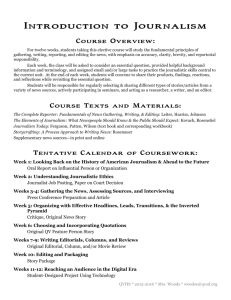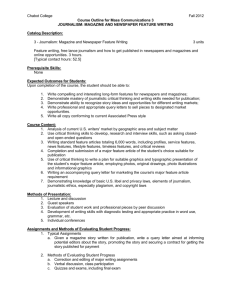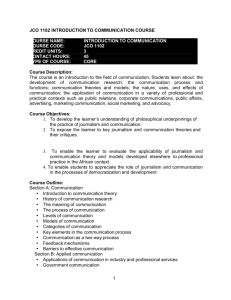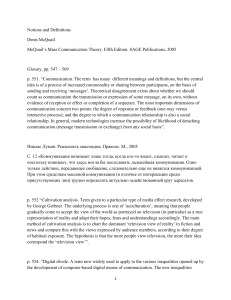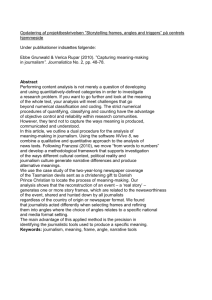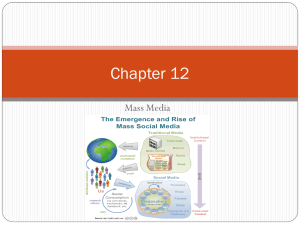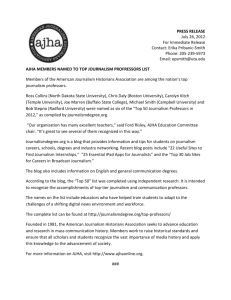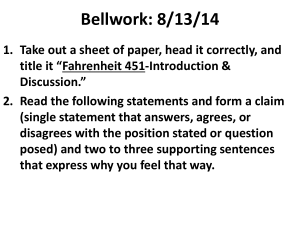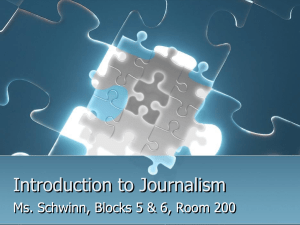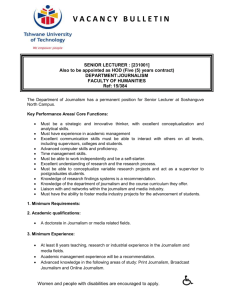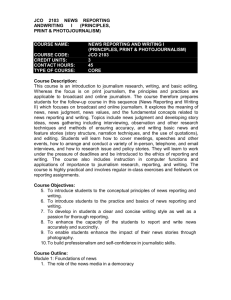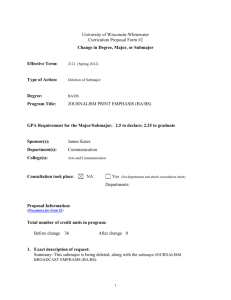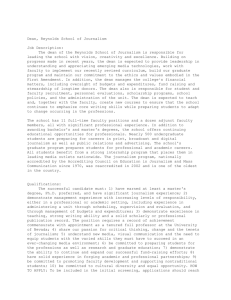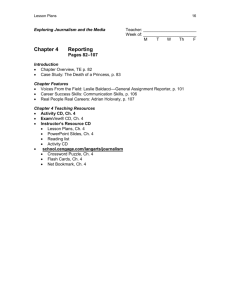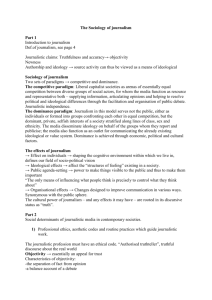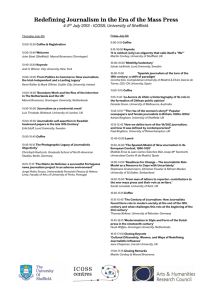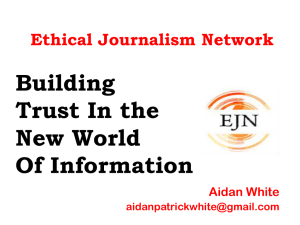3dayhistory
advertisement
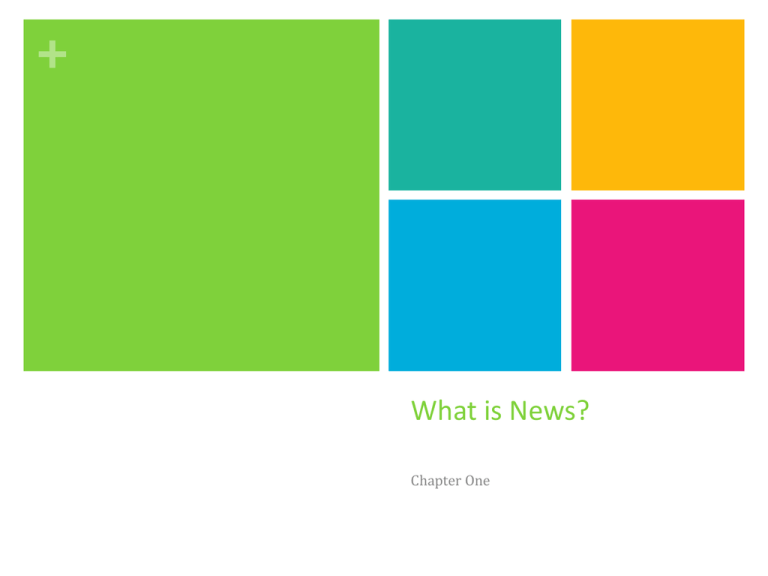
+ What is News? Chapter One + What is news? News a person, thing, or event considered as a choice subject for journalistic treatment; newsworthy material the presentation of a report on recent or new events in a newspaper or other periodical or on radio or television. a report of a recent event; intelligence; information + Types of News Stories Hard News Soft News serious news of widespread import, concerning politics, foreign affairs, or the like, as distinguished from routine news items, feature stories, or human-interest stories. News, as in a newspaper or television report, that does not deal with formal or serious topics and events. Feature Story An article not meant to tell breaking news, but to take an in-depth look at a subject. + Types cont.. Entertainment Sports Journalism that focus on the entertainment business and its products. Like fashion journalism, entertainment journalism covers industryspecific news while targeting general audiences beyond those working in the industry itself. Form of journalism that reports on sports topics and events. Opinion Journalism that makes no claim of objectivity. Although distinguished from advocacy journalism in several ways, both forms feature a subjective viewpoint, usually with some social or political purpose. + What makes something newsworthy? Certain steps should be taken to make sure that the content of the story is newsworthy. Stories should have 2-3 of these qualities to make the piece newsworthy. Timeliness – Did the news event happen recently or was it a long time ago? For a daily news something that happened last week would not be as timely as it would be for a magazine that last published a month a go. Impact- This story will create emotion in your reader. + Cont.. Proximity- Did the event happen close to here or was it far away? If you lived in Fort Wayne your local paper wouldn’t write a front page story about an American Idol contestant from Stanwood, Washington, unless the contestant had some relationship to Fort Wayne. Controversy- It's human nature to be interested in stories that involve conflict, tension, or public debate. The content doesn’t need to be a debate or a disagreement, any type of conflict works. Prominence- Is there an important person in the story? A story about the death of a public official or someone who is a prominent member of society would probably override a story with less prominence. + Cont.. Currency- Is this event currently happening or are people in the area talking about this event? If the school board decides to revise the safety policy of the high school may not attract a whole lot of attention, but if the board decided to make a revision after a recent bomb scare or gun incident, that story would. Oddity- The extraordinary and the unexpected appeal to our natural human curiosity. As the saying goes, "If a dog bites a man, that is not news. But if a man bites a dog, it's news! + Writing Journalistically. News writing attempts to answer all the basic questions about any particular event in the first two or three paragraphs: Who? What? When? Where? and Why? and occasionally How? Purpose of the journalism is to inform, explain, describe, or define his or her subject to the reader. Objective and Unbiased + Writing Journalistically.. Lead Paragraph- The most important structural element of a story is the lead, the story's first, or leading, sentence. The lead is usually the first sentence, or in some cases the first two sentences, and is ideally 20-25 words in length. Answers 5w’s. Copy or Body- Paragraphs between the lead and the conclusion. The body of a story holds the important facts. Conclusion- The conclusion paragraph wraps up what was told in the story and ends the article. + Cont.. Inverted pyramid- the style of journalistic writing where all the important information is at the beginning and works it way down to the less important information. Mostly used for editing purposes.
